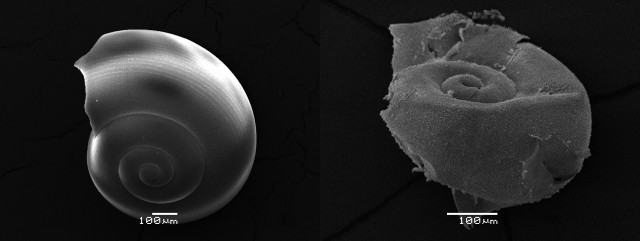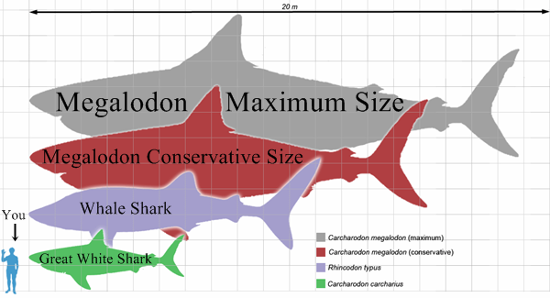The "
evil twin of global warming", better known as ocean acidification, is considered an often overlooked but serious environmental impact from anthropogenic CO2 emissions. Ocean surface pH has been decreasing at an alarmingly rapid rate throughout the last 200 years,
faster than at any point within the last 300 million years. In fact, as revealed by a study in April last year, the last time ocean acidification occurred this fast,
it was a major contributing factor to the End-Permian mass extinction. The Permian, as a quick reminder from
earlier posts, was the largest mass extinction event of the Big Five, with over 90% of species becoming extinct. The study found new evidence that extensive Siberian Trap volcanism triggered Ocean acidification during the end of the Permian era which drove the mass extinction and loss of 96% of marine life.
The study collected data using boron isotopes as a proxy for ocean pH and generated models based on this. They found the most likely scenario was two pulses of extinction in a setting where the Earth system began as "primed" for rapid increases in ocean acidity. The first pulse was a slow injection of CO2 into the atmosphere by ongoing volcanism over tens of thousands of years during which the extinctions were mostly terrestrial. The second phase there was a large and rapid injection of CO2, likely from a huge eruption, which caused abrupt acidification of the oceans and drove the loss of the many marine species that went extinct during the event.
 |
| An example of what ocean acidification can do to marine biota; Source. |
What does this mean for modern oceans? And why do we need to care? The quantity of CO2 injected into the atmosphere during the end of the Permian was probably greater than today's fossil fuel reserves, however, the rate of CO2 release and subsequent interactions with the oceans was likely similar to current emissions. The rate of release is crucial because it there is a correlation between rate of release and rate of absorption, meaning more CO2 absorbed
by oceans ends up as H+ ions, as oceans cannot just hold all the CO2 being released. This means on the whole, more acidification than there otherwise would be. It also means that there is much less time for any species to adapt to changing conditions.
Modern oceans are estimated to have seen a
30% increase in the concentration of H+ ions since the late 18th Century, which corresponds in a fall in pH from 8.25 to 8.14. This is estimated to
reach 7.75 by 2100 if there is not considerable intervention. We can see the impacts of ocean acidification in our oceans already, and many of them mirror the events of the End-Permian extinction event. For example, a group of snails known as pteropods have been identified in multiple studies as
experiencing shell dissolution, sometimes as soon as they are born. It is thought that 50% of pteropods species are currently affected by acidification and that this has doubled since the 1800s, and w
ill likely triple by 2050. In fact, all marine organisms which use calcareous materials are at risk of experiencing dissolution. This includes
corals, crustaceans, echinoderms and foraminifera as well as the aforementioned molluscs. Additionally, we see coral reef bleaching as the symbiotic
relationship between coral polyps and dinoflagellate algae is disrupted due to the algae having a narrow range of pH tolerance. Corals themselves, suffering from both dissolution and bleaching, are a massively important component of shallow water marine ecosystems - t
hey provide habitat for 25% of marine species and drive fishing and tourist industries for many developing nations. (For more on this
check out my colleagues blog on Tourism and the Environment).
This is likely what happened in the Permian extinction, the vast majority of marine life in that era had exoskeletal components composed of calcium which made them extremely vulnerable to rapid drops in ocean pH. Whilst modern marine biota is more morphologically diverse, there is still a large component of our ecosystems which is already suffering. Indeed, this component cannot be separated from the system just as it could not be in the Permian and any losses will have unavoidable trophic impacts on non-calcareous species. The "evil twin of global warming" cannot rationally be ignored any longer, and thankfully there was
some recognition of that in the recent COP21 talks. Whilst they may not be the most spectacular or interesting of animals (to some), small molluscs, foraminifera and other calcareous micro-organisms form the basis of most, if not all, marine food webs and we need to truly recognise the importance of protecting them and reflect that in policy.
For a practical demonstration of the impacts of ocean acidification, check out this interesting video below!






